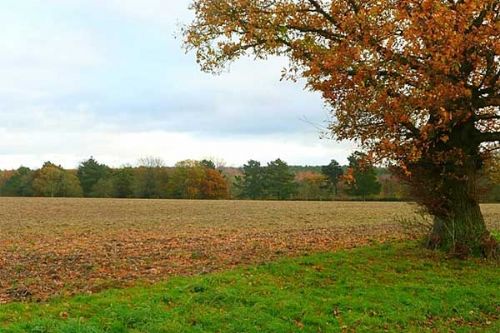
A new survey by Barclays Agriculture reveals that more than half (55 per cent) of Arable farmers have ambitions to expand the area they farm over the next two years. This compares with 52 per cent surveyed last year.
The survey, which was carried out at the 2011 Cereals Event amongst 160 farmers responsible for the management of over 52,000 hectares, also shows that 42 per cent expect their farmed area to remain the same. This leaves just three per cent who expect their land area to decrease, with one of these being in the process of selling land for residential development.
Of those who expect to increase the area farmed, 48 per cent intend to do so only by outright purchase. The remaining respondents were happy to consider any combination of purchase, Farm Business Tenancy or Joint Venture of some kind.
Commenting on these results, Martin Redfearn, Head of Agriculture at Barclays said: "The most obvious conclusion we can draw from this is that demand for land is likely to continue to exceed supply by a very considerable margin and, under the inexorable pressure of supply versus demand, prices will be under a similar level of upward pressure.
"Increasing land value would provide a welcome boost to a bank’s security for lending, although it should be emphasised that ability to service debt is a more important consideration in assessing lending propositions. Agriculture is an industry that has an enviable track record for servicing and repaying debt, very largely without recourse to asset sales, so the underlying value of land, while a valuable back stop, is not of itself our primary interest.
"Those embarking on a course of expansion should be clear about the potential for set backs as well as the excitement of steps forward. We are as keen as we have ever been to support our customers as they look at opportunities to develop and expand their businesses. We are also mindful of the need to ensure that they do not expand or borrow themselves into a situation which puts them and their business into a position where they may struggle to service borrowing and repay loans."
Interest rates and risk management
With expansion in mind, farmers were also asked whether they had already fixed the interest rate on all or a proportion of their borrowing in order to have a degree of certainty around the overall annual cost of borrowing. One third of respondents were not significant long term borrowers, while another third had already fixed some or all of their borrowing.
Of the remaining one-third who had not yet fixed the interest rate on a significant proportion of their borrowings, almost half said they recognise the current cost of borrowed money is very low by historical standards and said that they were seriously considering fixing the cost of some or all of their borrowing in the near future. The percentage that hadn’t yet fixed but is considering it is higher than last year, indicating that this aspect of risk management is attracting increased interest among borrowers.
Commenting on these results, Martin Redfearn said:
"Given that interest rates have only one way to go from the current historical lows we were encouraged that the number of farmers thinking about fixing their rates is increasing."
Investing in the future - renewable energy
The subject of renewable energy has been widely discussed in farming circles for some time and the Cereals Event was no exception. Over half of those surveyed (56 per cent) said they would consider investing in some form of renewable energy generating enterprise in the next two years, an increase from 43 per cent last year. Around one third of these were considering wind power, compared with nearly half last year. Another third were considering photo voltaic cells, up from under 20 per cent last year.
Despite a higher level of general interest in renewable energy, less than a quarter of them could put a figure on the scale of investment they had in mind compared with closer to fifty per cent last year. Those who did gave an estimate between £25,000 and £100,000, with only one expecting to invest over £1m. Last year the majority were looking at the £100,000 to £150,000 range with four thinking in terms of investments over £1 million.
On this issue Martin Redfearn observed:
"There appears to be a more balanced and realistic approach to the opportunities around renewable energy and recently announced changes to Feed in Tariffs aimed at smaller scale local projects are clearly having an impact on the ambition of farmers as potential investors. We are keen to talk to any farmer looking at the potential for wind and solar power to add to the success of their business. And we would encourage anyone considering an investment in renewable energy to include their Bank Manager in their discussions sooner rather than later to ensure that the scale of investment being considered is realistic in the context of the overall business."
In conclusion, Martin Redfearn said that:
"Visitors to the Cereals Event are more likely than average to be thinking about active management of their businesses, including expansion and renewable energy projects. However they will be competing hard with each other for the limited area of land likely to be available for sale or rent in the near future. Individual circumstances will vary, but careful consideration of the cost of expansion of farmed area and investments in renewables, and the pressure it will put on the underlying business, will be a pre-requisite for all.
"Farmers are clearly more aware than ever of the need for risk management in a volatile world, and taking steps to limit their exposure to certain elements of risk. This is a welcome development, but clearly the industry has still some way to go in not only recognizing where risks lie, but in actively taking steps to mitigate them."
